Klemens Schillinger visualises changing values of gold with Element 79 jewellery collection
Vienna Design Week 2015: Austrian designer Klemens Schillinger has created a series of rings that are sized to show the fluctuating price of gold over the past five decades, as part of a jewellery collection (+ slideshow).
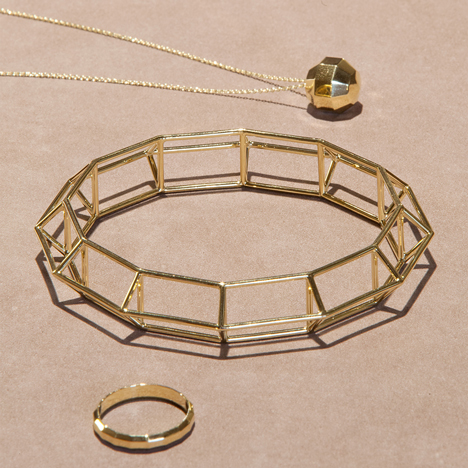
Schillinger was paired with Viennese jewellers AE Köchert Juweliere for Vienna Design Week's Passionswege programme, which teams designers and the city's production companies.
His Element 79 project resulted in a set of rings, bracelets and necklace pendants all made from gold – the 79th element in the periodic table.

Each of the designs presents different values of gold – including purity, strength and price – in wearable items.
"It's about visualising the intrinsic values of gold, not just its visual beauty," said Schillinger, who is based in London. "I've taken the inner value of gold and turned it into a design principle."
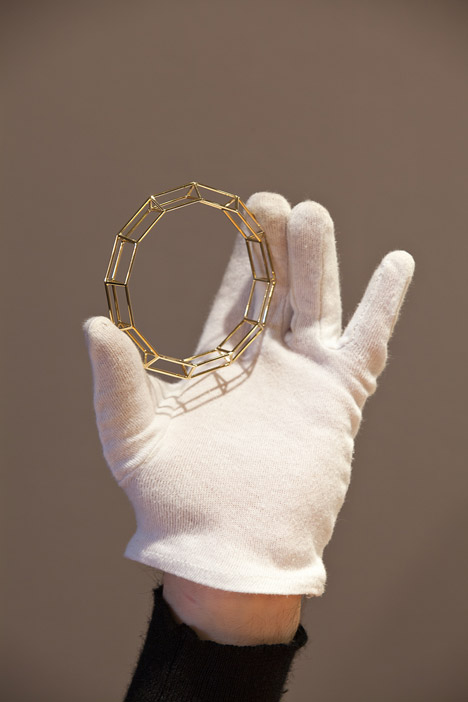
Schillinger's previous projects range from concrete desk accessories shaped like ancient architectural monuments and a lamp that can rotate freely without the interruption of wires, but he had never worked with gold or jewellery before.
He created the set of rings to represent the price of gold over the past five decades as physical objects.
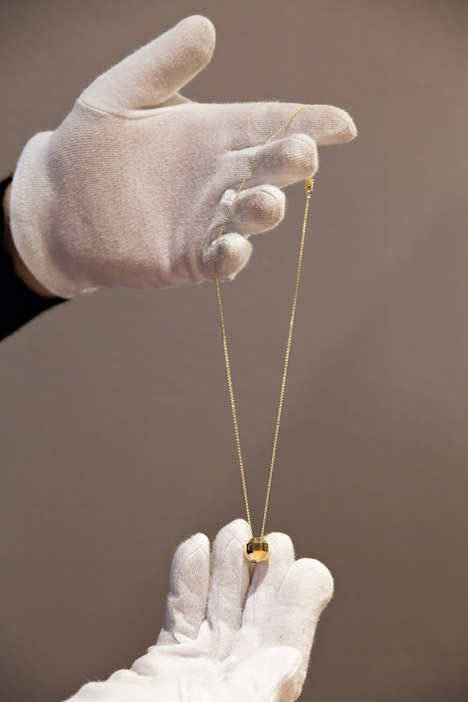
Each has the same faceted design but varies in depth, showing how much gold could be bought for the same amount of money in different years – taking inflation into account.
"The gold price has changed quite a bit over the past 50 years, this becomes the design parameter for a ring," he said. "You can see how much ring you would have gotten in that year."
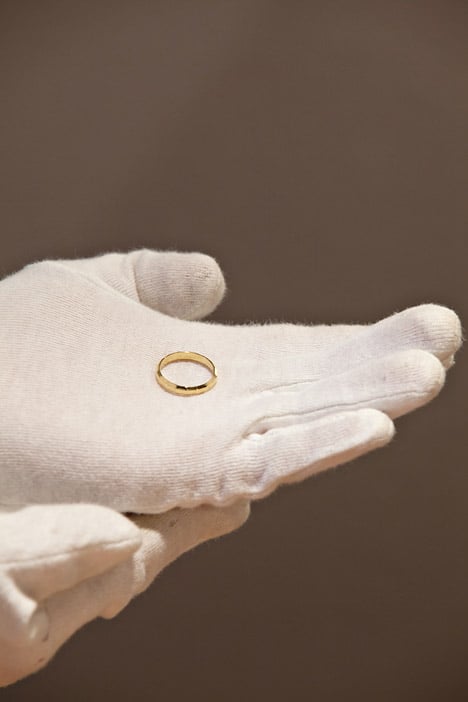
Schillinger has documented the prices for each year since 1965, but five of the rings – representing 1970, 1980, 1990, 2000 and 2015 – have been produced for the project.
He has also created an app that allows users to flick through time and watch the ring change in size as the years pass on screen.
"You can see that in the 1970s you would have had a lot of gold for the same amount of money that you would in the 1980s – 7.5 times more just 10 years before," said Schillinger.
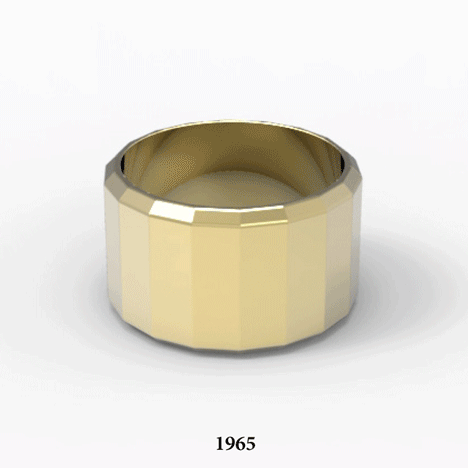
Schillinger has also visualised the different purities of gold, measured in carats, using a set of three pendants that hang from chain necklaces.
Related stories: see more gold design and architecture
"Gold is usually alloyed with other metals to make it stronger when is used in jewellery, otherwise it would be too soft," he said.
The 24-carat pure-gold pendant is represented as a perfect sphere. An 18-carat design has a slightly faceted surface, and the 14-carat piece – 58.5 per cent gold – is even more angular.
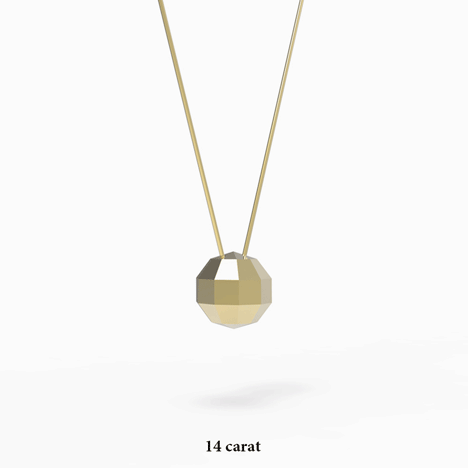
"The pendants take the concept of image visualisation and make it into a three-dimensional object," said Schillinger.
Finally, the bracelet designs examine the strength of the material by comparing different carat values.
"24 carat is very soft, while 14 carat is much stronger," said the designer, who created a base design for the series of cuffs with three bands linked by triangular supporting elements.
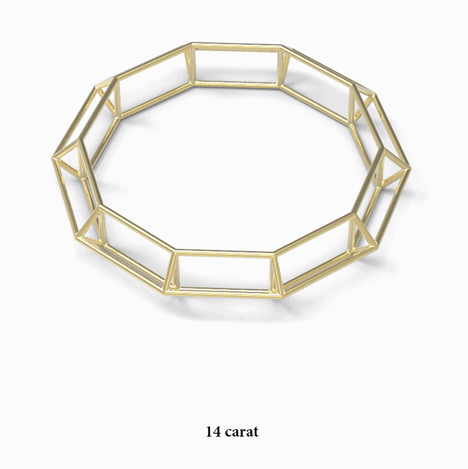
As the softer material requires more structural support, additional vertical braces are added to the pieces made from the more pure gold.
Only one piece from each set has been created in real gold. These pieces are presented alongside 3D-printed versions of the other variants.
The pendant and rings are 3D-printed in wax to create a mould, then cast in two pieces and soldered together. A similar process was used to cast the triangular sections of the bracelet, which are joined together with sections of thin gold wire by hand.
"You could 3D print and cast the whole piece, but the craftsman is too proud to do it in that way," said Schillinger.
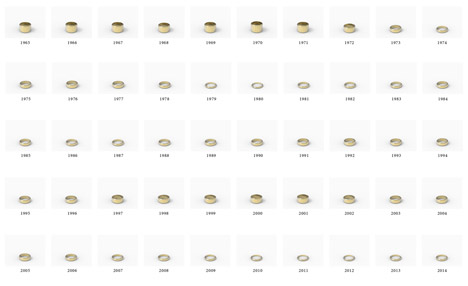
The pendant can be purchased for approximately €1,500 (£1,105), the bracelet is €5,900 (£4,345) and the ring –representing this year's gold price costs €890 (£655).
The jewellery is on show at AE Köchert Juweliere's store on Neuer Markt in the centre of Vienna, for the duration of the city's design week. Also part of this year's Paissonswege project, Kneip worked with a water-jet cutting company to create a set of miniature motorised sculptures.